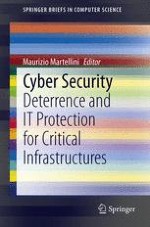2013 | OriginalPaper | Buchkapitel
Cyber Security for Chemical Plants
verfasst von : Maurizio Martellini, Stephanie Meulenbelt, Krzysztof Paturej
Erschienen in: Cyber Security
Aktivieren Sie unsere intelligente Suche, um passende Fachinhalte oder Patente zu finden.
Wählen Sie Textabschnitte aus um mit Künstlicher Intelligenz passenden Patente zu finden. powered by
Markieren Sie Textabschnitte, um KI-gestützt weitere passende Inhalte zu finden. powered by
